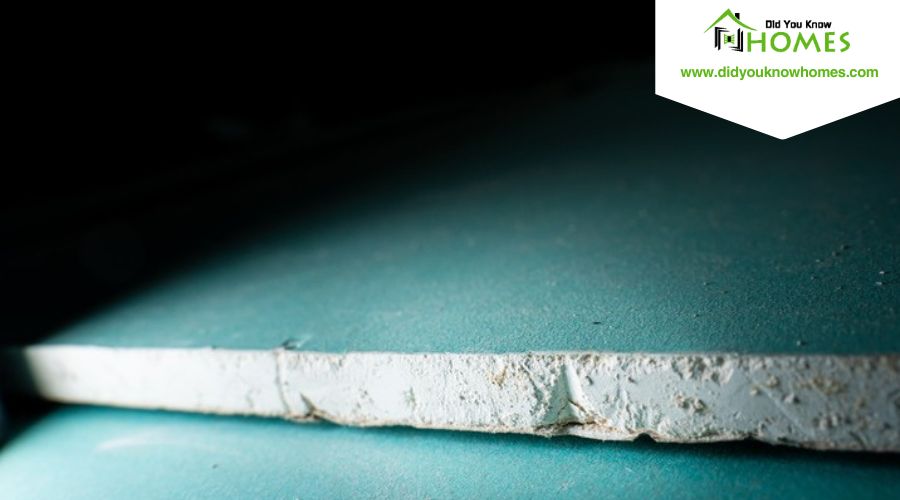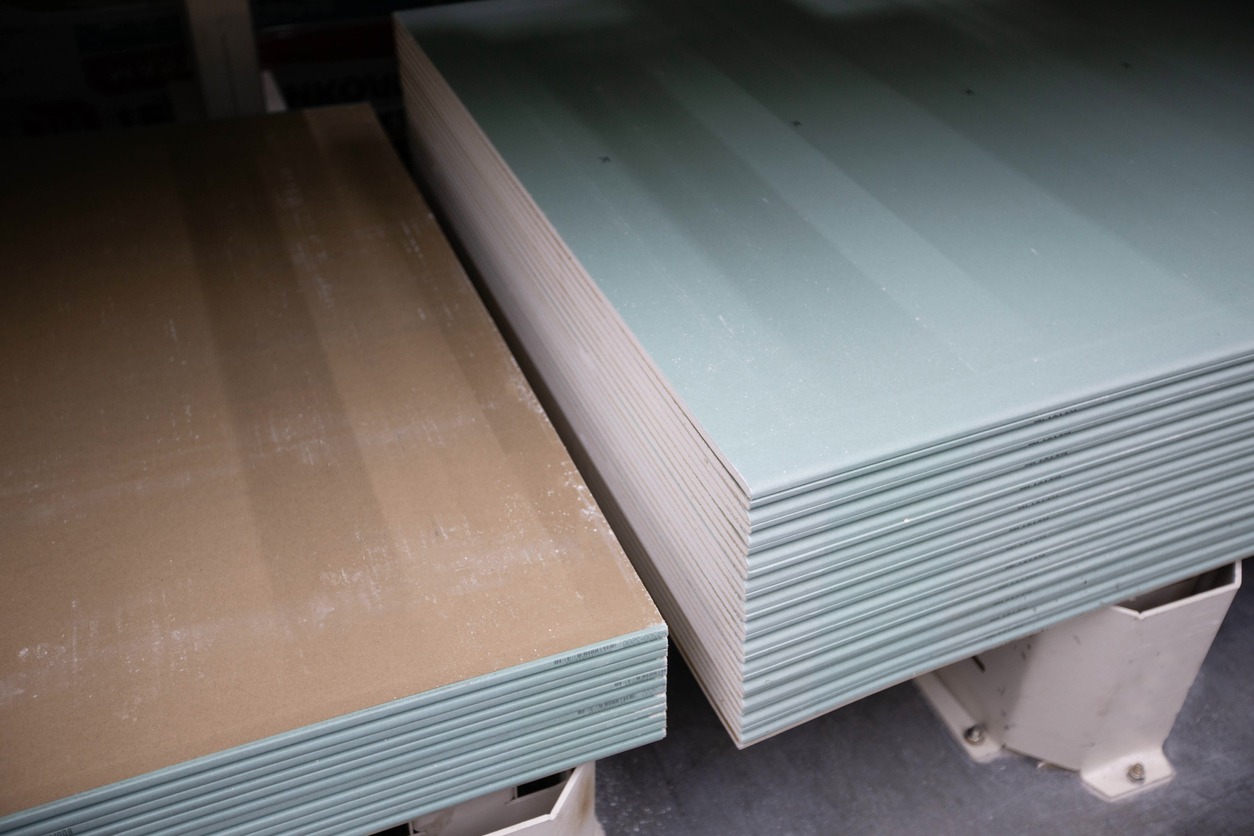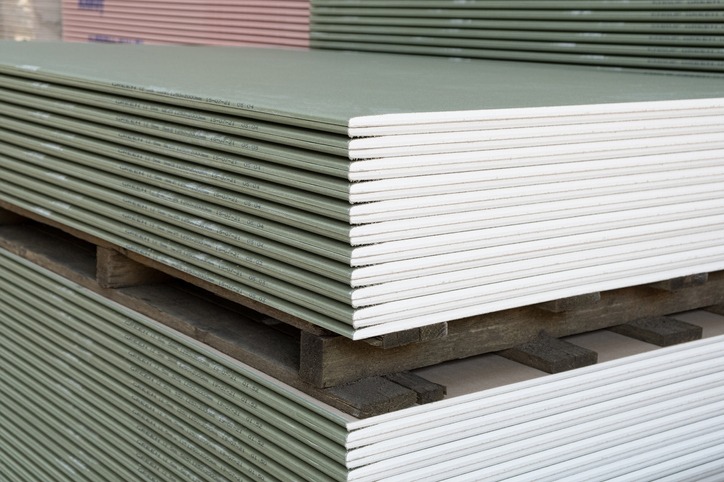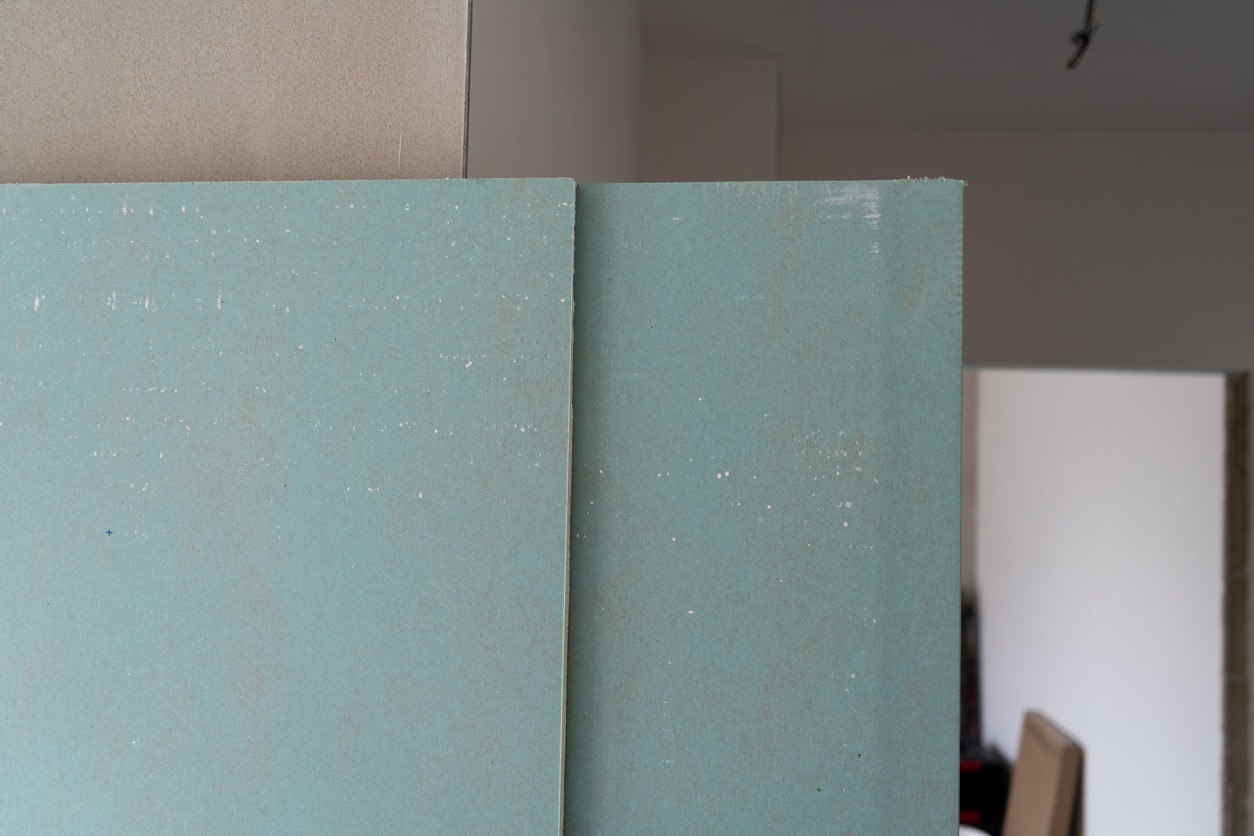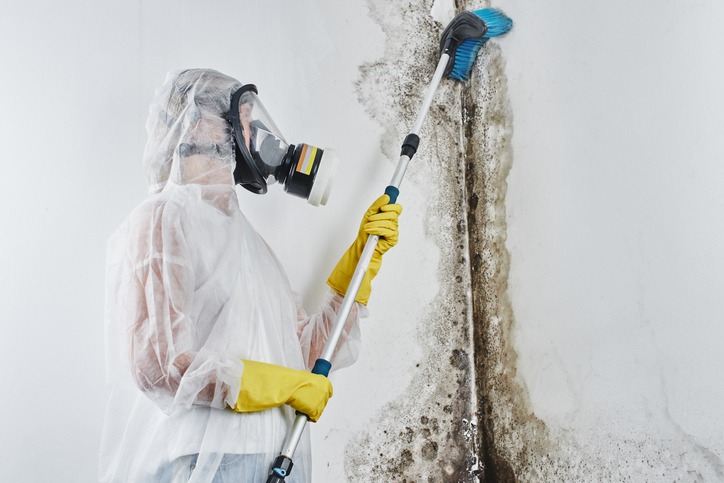While standard drywall might crumble under the pressure of humidity, moisture-resistant varieties stand firm, offering a beacon of hope for homes in damp climates. If you’re living in an area where the air feels more like a wet blanket than a gentle breeze, it’s essential you select the right type of drywall. Moisture-resistant and purple drywall options promise enhanced durability and protection against the relentless advance of mold and mildew. But how do you choose between them, and what makes one better suited for your home over the other? This is where your journey begins, as you navigate the nuances of drywall in the battle against humidity.
Understanding Humidity’s Impact
High humidity levels can cause your regular drywall to absorb moisture, leading to warping, mold, and mildew growth. In places where the air often feels damp, the walls in your home are at risk. You’ll find that moisture absorption isn’t just a surface issue; it can penetrate deep into the drywall, compromising the structure and air quality of your home. This is where moisture-resistant drywall comes into play. It’s designed with additives that make it water-repellant, combating the effects of high humidity.
Moisture-resistant drywall has a specially formulated core and a paper cover that resists moisture penetration. These features ensure that even in areas like your bathroom, kitchen, or basement, where humidity levels are consistently high, your walls remain intact. Opting for this type of drywall can prevent the extensive damage that moisture can cause, such as the growth of mold and mildew, which are hazardous to your health. More importantly, choosing moisture-resistant drywall for humid climates is a smart decision for the long-term durability of your home. It’s an investment in maintaining a safe and stable environment where the walls won’t betray you when the air gets damp.
Types of Moisture-Resistant Drywall
When you’re picking drywall for humid areas, it is crucial to think about moisture-resistant options like Green Board Drywall and mold-resistant panels. These types offer extra protection in places prone to dampness, such as bathrooms and kitchens, ensuring your walls stay intact for longer. Making the right choice can save you from moisture damage and maintain your home’s structural integrity.
Green Board Drywall
For those tackling bathroom or kitchen renovations, green board drywall offers a moisture-resistant solution that’s both affordable and effective in combating humidity. It’s specifically designed with a water-resistant core and coated with mold-resistant paper, providing added protection for areas prone to moisture. Though not suitable for direct water contact, its superior performance in humid environments makes it a go-to choice for residential applications where moisture control is essential.
| Feature | Benefit |
|---|---|
| Water-resistant core | Enhances moisture resistance |
| Mold-resistant paper | Offers added protection against moisture |
| Cost-effective | Affordable solution for moisture control |
| Ideal for bathrooms and kitchens | Tailored for humid environments |
Green board drywall’s unique composition and cost-effectiveness make it an ideal option for adding moisture resistance in homes.
Mold-Resistant Panels
Building on the foundation of moisture resistance provided by green board drywall, mold-resistant panels offer an enhanced barrier against mold growth in humid areas. Mold-resistant drywall is specifically designed for high humidity areas, containing additives that make it inhospitable for mold spores to thrive. By choosing this type of drywall for bathrooms, basements, and other damp spaces, you’re taking an essential step to prevent mold development. Mold can be a significant health hazard, making the selection of mold-resistant drywall important for maintaining a healthy indoor environment in humid climates. This specialized drywall ensures that your home stays protected from mold’s harmful effects, keeping your living spaces safe and comfortable for everyone.
Green Drywall Explained
Understanding green drywall reveals its impressive moisture resistance, making it an ideal choice for humid climates. Greenboard drywall, as it’s commonly known, is specifically designed to withstand the challenges posed by high humidity levels. Its core feature is the ability to prevent mold and mildew growth, a significant concern in moisture-prone areas. This is essential for maintaining a healthy living environment, especially in regions where the air is often damp.
| Feature | Benefit |
|---|---|
| Moisture resistance | Protects against mold and mildew |
| Affordability | Cost-effective solution for humid areas |
| Versatility | Allows for painting and finishing |
| Easy to install | Similar installation process to regular drywall |
| Suitable for | Use in moisture-prone areas, not constant water exposure |
Greenboard drywall is not only affordable but also versatile. You can paint and finish it just like traditional drywall, allowing it to blend seamlessly with your decor. While it’s not suitable for areas constantly exposed to water, such as showers, it’s a cost-effective and practical choice for other parts of your home that face high humidity levels.
Benefits of Purple Drywall
While greenboard drywall is a great option for humid climates, purple drywall steps up the game with its superior moisture and mold resistance. You’re not just choosing a wall covering; you’re investing in a robust defense against the challenges of high humidity levels and prolonged moisture exposure. Here are a few compelling reasons why purple drywall should be your go-to choice:
- Exceptional Moisture Resistance: Purple drywall offers unparalleled moisture protection, guaranteeing your walls stay dry and intact, even in the dampest conditions.
- Mold-Resistant: It’s not just about keeping the walls dry; preventing mold and mildew growth is important for healthy indoor air quality. Purple drywall’s mold-resistant properties give you peace of mind.
- Durability and Fire Resistance: Beyond moisture and mold resistance, this durable material withstands the test of time and adds an extra layer of fire resistance for safety.
- Sustainability for Long-Term Durability: Ideal for sustainable projects, purple drywall ensures long-term durability, reducing the need for frequent replacements and repairs.
Choosing purple drywall means investing in a future where your space remains safe, dry, and resilient against the challenges posed by moisture and mold.
Selecting Drywall Thickness
When you’re picking drywall for humid climates, the thickness is key. Common measurements like 1/2-inch and 5/8-inch offer different levels of moisture resistance and soundproofing. Opting for the right thickness can greatly impact the durability and protection of your walls in these environments.
Importance of Thickness
Selecting the right thickness, either 1/2-inch or 5/8-inch, is important for drywall performance in humid climates. Here’s why thickness matters:
- Thicker drywall enhances moisture protection. Whether you’re battling high humidity levels or occasional water exposure, you need a barrier that’s up to the task.
- Mold and mildew resistance improves with thicker drywall. If you’re worried about health hazards, choosing the right thickness can give you peace of mind.
- Performance in humid climates depends on the right thickness. You don’t want your walls sagging or deteriorating prematurely.
- Consider the specific humidity levels of your area. This will guide you in deciding between 1/2-inch for standard protection and 5/8-inch for superior resistance.
Common Thickness Measurements
Understanding the common thickness measurements for drywall is essential in choosing the right option for your humid climate project. Whether you’re skimming over imperfections, patching up, or constructing standard interior walls, there’s a specific thickness that fits your need. For areas requiring enhanced fire resistance or soundproofing, selecting the right thickness is even more critical. Here’s a quick guide to help you decide:
| Thickness | Use Case | Benefits |
|---|---|---|
| 1/4-inch | Skimming | Hides blemishes |
| 3/8-inch | Patching | Ideal for minor repairs |
| 1/2-inch | Standard interior walls | Balance of performance and cost-effectiveness |
| 5/8-inch | Fire resistance and soundproofing | Enhanced protection in humid climates |
Choosing the appropriate thickness aligns with your project requirements, ensuring durability and satisfaction in humid climates.
Thickness Impact on Durability
After exploring common thickness measurements for drywall, let’s examine how thickness affects durability, particularly in humid climates.
- Thicker drywall, especially at 5/8-inch thickness, not only brings peace of mind but greatly enhances moisture resistance. This is important in humid climates where high moisture levels are a constant battle.
- Choosing this robust option for your interior walls means you’re investing in strength. It’s a shield against the relentless humidity impact, ensuring your walls stand strong.
- The battle against mold and mildew is real. Thicker drywall offers a formidable defense, minimizing the risk and keeping your home healthy.
- Opting for a 5/8-inch thickness directly impacts the long-lasting of your walls, turning what could be a frequent headache into a lasting solution in areas plagued by high moisture levels.
Installation Tips for Humid Areas
To effectively combat humidity in areas like bathrooms or kitchens, it’s important to use moisture-resistant drywall with a green or purple core during installation. This specialized drywall offers enhanced protection against moisture, making it a vital choice for humid climates. When installing, you’ve got to guarantee proper ventilation to prevent moisture buildup behind the drywall. This step is essential; without it, you’re inviting trouble.
Sealing joints and edges with moisture-resistant tape and compound further enhances protection against moisture. It’s not just about slapping the drywall up; it’s about making sure every seam is tight and secure. For an extra layer of defense against humidity, consider adding a vapor barrier behind the drywall. This additional step can make a big difference in maintaining the integrity of your walls.
In addition, don’t overlook the power of combining mold-resistant with moisture-resistant drywall. This duo offers all-encompassing protection, ensuring your walls stand strong against the relentless assault of humid conditions. Following these installation tips provides a solid foundation, safeguarding your home from the pervasive challenges posed by moisture.
Maintenance and Mold Prevention
Maintaining your drywall in humid climates requires regular checks and proactive measures to prevent mold growth and guarantee longevity. By employing a few straightforward strategies, you can make sure your home remains healthy and your walls stay pristine.
- Regular Maintenance: It’s crucial to fix leaks and control humidity levels. This might involve using dehumidifiers or making sure your HVAC system is appropriately sized for your space. Regular maintenance can stop mold growth in its tracks, keeping your home safe and your walls in top condition.
- Choose the Right Drywall: Opting for moisture-resistant drywall with mold-resistant properties is a wise choice for areas prone to high humidity. This specialized drywall acts as a strong barrier against mold, giving you peace of mind.
- Ensure Proper Ventilation: Installing exhaust fans in bathrooms and kitchens can greatly reduce moisture buildup. Proper ventilation is your first line of defense against mold, making sure that moisture doesn’t have a chance to linger.
- Inspect and Address Water Damage: Keep an eye out for signs of mold, discoloration, or musty odors. Promptly addressing water damage and making sure your walls are well insulated and sealed can dramatically decrease the risk of mold growth.
Conclusion
In humid climates, you’ve got to pick the right drywall to beat moisture woes. Opt for moisture-resistant types like green or purple drywall, with purple being the top choice for its superior resistance and durability in damp conditions. Remember, thickness matters for added protection. When installing, follow specific tips to keep moisture at bay. Regular maintenance and mold prevention are key to ensuring your walls remain in top shape. Make the smart choice to safeguard your home against humidity’s challenges.

